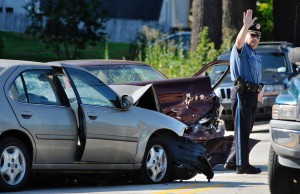
Young drivers are less likely to exhibit risky behavior if given clear rules about what's acceptable when they are behind the wheel.
Teachers often say that students thrive in classrooms with clear rules and expectations and a new study shows that concept translates to the road when teenage drivers get their license. Parents who lay out clear guidelines and parameters and then model those behaviors develop the safest drivers.
A research study from Safe Kids Worldwide and the General Motors Foundation reveals that teens who are given rules about what they can do when driving are less likely to engage in risky behaviors behind the wheel.
For instance, teens who have an established family rule against drinking and driving were 10 times less likely to report doing that illegal behavior than those who didn’t have an established rule, according to the group.
Additionally, teens with explicit family rules were more likely to wear their seat belt every time and were less likely to drive distracted or speed. While the formalized nature of rules may be the foundation of this approach, positive results are enhanced by parents who follow those same rules.
(Car crashes No. 1 killer of teenagers in U.S. For more, Click Here.)
Teens who saw a parent driving after drinking were three times more likely to report driving after drinking than teens whose parents modeled safe behavior. And past research revealed that teens were more likely to buckle up on every ride if their parents made buckling up a consistent habit from a young age.
Young drivers in the survey said that their parents had biggest impact on their driving habits. The study also showed that the more time that kids get behind the wheel with their parents in the vehicle, the better and more confident teens felt.
Often it is assumed that with the advanced technology available in many of the vehicles on the road today, that young drivers are better equipped to handle the challenges of the being behind the wheel – better than the generation of motorists before them.
“Technology advances in vehicles today, such as forward collision warning and automatic emergency braking, provide more help to the driver,” said Jeff Boyer, vice president of global vehicle safety at General Motors.
(Click Here for details about the best type of car for first-time drivers.)
“But being a new driver can be quite challenging, so it is especially important for teens to stay focused while driving and always buckle up. Additionally, our newly introduced Teen Driver feature now provides parents a teaching tool for their young drivers which helps to develop and reinforce safe driving habits.”
However, there is no substitute for experience. Technology cannot help young drivers interpret the unique, often chaotic, events that can happen while driving. Parents can help them through trying and challenging situations and provide immediate feedback on how to handle those moments in the future.
Young drivers all make mistakes behind the wheel, regardless of gender. However, young men are much more likely to be involved in a crash than young women, according to the survey. Males make up 75% of teen deaths in car crashes, and the risk of a crash by teen drivers is almost three times higher if their passengers are male.
“Our sons and daughters are dying in car crashes because they are inexperienced drivers who are taking unnecessary risks, like texting, driving under the influence, speeding and not wearing a seat belt,” said Kate Carr, president and CEO of Safe Kids Worldwide.
(To see how young drivers interest in new vehicles rises with increase in technology, Click Here.)
“Given that three out of every four deaths is a son, I encourage all parents, particularly parents of young men to make it a priority to put an agreement in place and make sure you are following the rules, too.”

